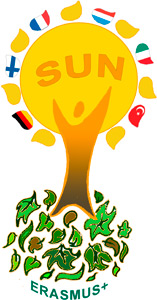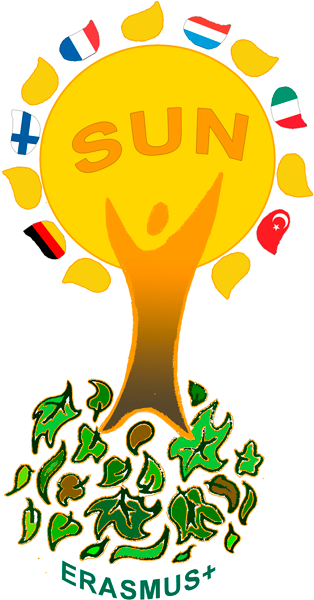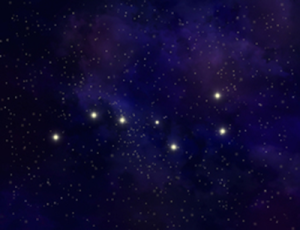Solar and Lunar Eclipse, the Sky, The Milky Way and Constellations
Solar and Lunar Eclipse, the Sky, The Milky Way & Constellations – In Northern cultures
Solar eclipses
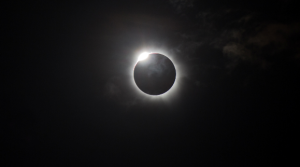 There aren’t many myths about solar eclipses due to Polar nights. Other reasons are that solar eclipses are in general rare in polar regions. In summer the temperature difference in significant during an eclipse and the people of the north were mainly hunters or fishers and the sun was not of that great importance compared to southern agricultural cultures.
There aren’t many myths about solar eclipses due to Polar nights. Other reasons are that solar eclipses are in general rare in polar regions. In summer the temperature difference in significant during an eclipse and the people of the north were mainly hunters or fishers and the sun was not of that great importance compared to southern agricultural cultures.
One myth that we found was in Norse mythology. Sol (the sun) was pursued by a wolf Skoll and the sun is blotted out when the wolf catches its prey, however people of Earth could make enough noise to scare the wolf away and restore light (however at Ragnarök this fails). [2]
Lunar eclipses
The moon was more important for hunters and fishermen than the sun. For myths, the Kolts believed that lunar eclipses were caused by a troll eating the moon. Another similar one is in Norse mythology, where Mani (the Moon), similarly to the sun, is also pursued by a wolf Hati and when the wolf catches Mani it causes an eclipse. [2]
Sky and Firmament myths
The Sami believed that the sky was supported by a world pillar. At the end of the pillar was Polaris, the North star. The Firmament was a dome that covered the Earth which was believed to be flat. It was thought that a world pillar, a world tree or giants supported the firmament. The stars were holes where outside light came through. The Firmament had different layers and the amount varied by culture.
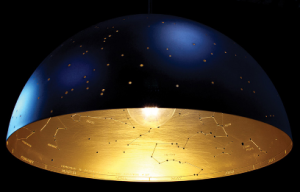 The Finns believed that Väinämöinen had a home in the sky where he would tell about solar or lunar eclipses and of future weather by changing the positions of stars. [1,9]
The Finns believed that Väinämöinen had a home in the sky where he would tell about solar or lunar eclipses and of future weather by changing the positions of stars. [1,9]
The Milky Way
Names of the Milky Way in myths
In many Northern cultures the names are linked to birds. For example in Finnish its called Linnunrata – Bird’s way, in North Russia and some other places its called the Wild gooses road and The Sami call it the Bird’s Staircase, because these cultures believed that birds used it to navigate when they were migrating. An exception to the bird linked names is the Swedish name for the Milky Way, Vintergatan – winter road, since it was seen best in winter. [7,10,13]
The origin of the Milky Way in Myths 
Myths about the origin of the Milky Way were influenced by the hunter nature of the people. For example the Mansi believed that the Milky Way formed when God created a deer with six legs. Humans couldn’t catch the deer so they called upon the Forest Spirit for help. The Forest Spirit caught the deer and broke two of its legs so that humans could hunt it. The Milky Way represents the ski trail of the Forest Spirit. [6]
What is the Milky Way
The Milky Way has been associated with the Bifrost rainbow bridge. Another myth was that it was a way that migratory birds follow led by a white bird with a head of a maiden that all birds of prey fear. In summer the White Bird lives on top of a boulder. The reason for this is that the closest bright star to the Pole was Deneb in Cygnus (the Swan constellation) until 9300 BCE and because of this Cygnus seemed to be almost stationary. Other myths were a road of souls of the deceased. The road souls and the soul bird follow to the afterworld, Tuonela. It was thought to be a world tree, since when the Milky Way was the furthest from the North Pole, the Milky Way was almost vertical and resembles a tree. The tree’s species differs between cultures. The Baltic sea Finns believed that the Milky Way was the Holy swan’s path across the sky.
The Milky Way was used to predict weather and many cultures have associated it with a river, bridge or a boundary across worlds. [7,10,12]
Stars & Constellations
Download the .pptx:
Auringon- ja kuunpimennykset (4.8 MB)
There are some myths about stars and constellations in the North. Some are listed here. These are not from Norse mythology.
Vega: Sudrstjarna – South star.
- Sirius : Kaleva’s star.
- Polaris: Taivaan neula, Leidarstjarna – the Sky’s nail, Guiding star.
- Arcturus: Aurinkotähti , Dagstjarna – Sun star, Day star.
- the Pleiades: Väinämöinen’s Bast shoe, Freyja’s hens and a sieve.
- Orion was known as Kaleva’s sword, Väinämöinen’s scythe or rod and Väinö’s belt.
- The Big Dipper; the representation of the six-legged deer in the Mansi people’s Milky Way legend
[1,6,12,14]
Norse constellations
These mainly from the Norse mythology.
- Friggerock (Frigg’s distaff); consists of Orions’s belt. Another name is Fishermen.
- Eagle ; the eagle constellation consists of largely the same stars as Cygnus the swan.
- Vedrfolnir (wind-parched) ; constellation for the hawk upon the eagle’s head.
- Nidhogg (poison biter) ; constellation of a serpent at the foot of Yggdrasill’s root. Consists of many of the same stars as Scorpius.
- Big Dipper: Karlvagn – the chariot of Karl or man.
- Kvennavagn – woman’s chariot, Ursa Minor.
- Hellewagen; wagon of the dead that travels along hellweg or the Milky Way.
[11,12]
More Norse constellations
- Thiassi’s Eyes; consists of Gemini’s stars Castor and Pollux.
- Dain ; one of the deer constellations in the branches of the World Tree, smallest deer.
- Dvalin ; one of the deer constellations, associated with the second smallest of the deer, consists many stars of Cepheus.
- Duneyr ; one of the deer constellations, associated with the second largest of the deer, consists mostly of the Large Bear.
- Durathror ; one of the deer constellations, associated with the largest of the deer, consists of Perseus and Auriga constelletions.
- Ratatosk ; the squirrel constellation, consists of the main stars in Cassiopeia.
- Ulf’s Keptr – mouth of the wolf, Haydes.
[11,12]
References
[1] Siikala, Anna-Leena. Itämerensuomalaisten mytologia, Suomalaisen Kirjallisuuden Seura, Helsinki, 3. painos, 2014, pp.166-174.
[2] Haworth-Maden, Clare (Ed.). Viking Gods, Quantum Books, London, 1998.
[3] https://fi.wikipedia.org/wiki/Linnunrata (25.10.15)
[4] http://www.taivaannaula.org/esivanhempien_puu.pdf(25.10.15)
[5] http://kirlah-kielet.blogspot.fi/2007/11/linnunrata-eri-kielill.html (25.10.15)
[6] http://www.nic.funet.fi/~magi/metsola/arkisto/wyrd/tahdet.html (25.10.15)
[7] https://en.wikipedia.org/wiki/Milky_Way_(mythology) (25.10.15)
[8] http://www.windows2universe.org/mythology/bifrost_milkyway.html (25.10.15)
[9] https://fi.wikipedia.org/wiki/Taivaankansi (31.10.15)
[10] http://folklore.ee/folklore/vol22/milkyway.pdf (25.10.15)
[11] [http://www.timothystephany.com/constellations.html (25.10.15, 31.10.15)
[12] http://www.digitaliseducation.com/resources-norse.html (25.10.15)
[13] https://knowledgeguild.wordpress.com/2013/09/22/myths-of-the-milky-way/ (31.10.15)
[14] https://en.wikipedia.org/wiki/Pleiades_in_folklore_and_literature (31.10.15)
[15] http://www.andrewcollins.com/page/articles/thecygnusmystery_cygnus.htm
Pictures
[1]http://tropicalsails.com/salt-lake-city-solar-eclipse-2017-tour-package/
[2] https://en.wikipedia.org/wiki/Sk%C3%B6ll
[3] http://www.azcentral.com/story/news/local/arizona/2015/09/24/how-to-watch-rare-supermoon-blood-moon-tips/72590142/
[4] http://aplanetruth.info/2015/03/24/flat-earth-images/
[5] image The Mlilky Way copyright 1999, Mellinger, Alex.
[6] http://novosti-n.org/ukraine/read/76778.html
[7] http://pics-about.space/constellations-all-planets-lined-up?p=1
[8] https://peda.net/oppimateriaalit/e-oppi/alakoulu/efyke5-6/2/15/t%C3%A4htikuvioita/oottsooetjvekonotbdj
Made by:
Nerissa Shakespeare, Essi Tynkkynen, Liam Sweeney and Muhis, Finland
